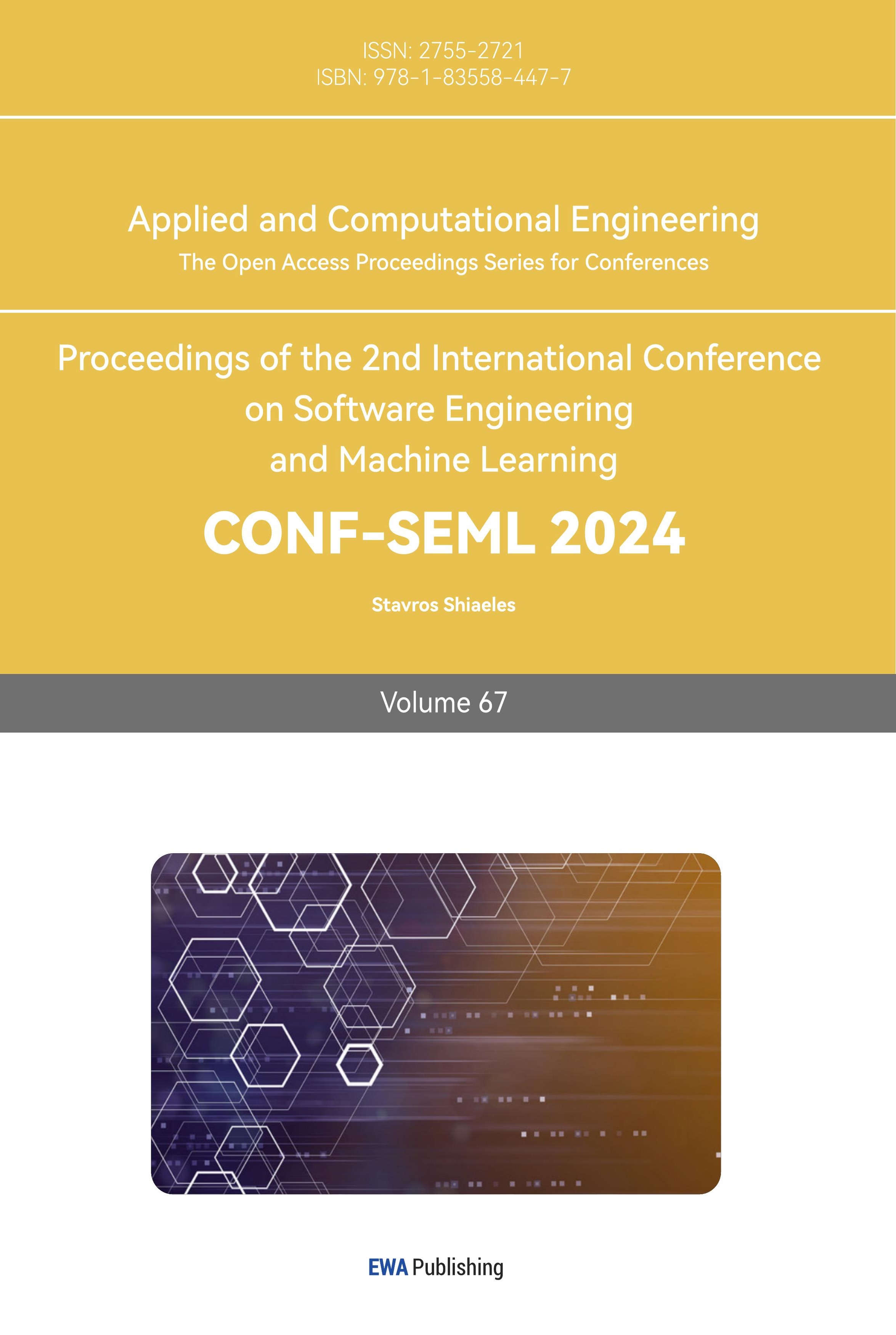1. Introduction
In today's society, With continuous advancements in computer graphics and Computer-Aided Design (CAD) technology, 3D modeling has become more sophisticated and complex. Modern 3D modeling software provides artists and designers with a plethora of tools and functionalities, enabling them to create highly realistic and intricate models. Additionally, the rise of Virtual Reality (VR) and Augmented Reality (AR) technologies has introduced new applications and challenges to 3D modeling.
With increasing competition, creativity and innovation have become key drivers in the 3D modeling industry. Designers and artists continuously explore new technologies and methods to break traditional constraints and create more engaging and awe-inspiring works. Dragon modeling, as a subject rich in imagination and mystery, attracts an ever-growing number of creators to delve into its design and modeling.Here is a gradual shift in the field of computer science from reliance on complex code editing techniques towards more intuitive visual software applications [1-3]. Modeling and rendering technologies have undergone extensive development and continuous iteration, becoming indispensable tools across various domains [4,5]. For instance, in product conceptual design, designers can utilize modeling software to efficiently create various complex product prototypes through simple operations, thereby enhancing work efficiency and creative expression diversity. In the field of architectural design, architects can employ modeling software to simulate architectural structures, materials, and lighting conditions, facilitating better presentation of design ideas while reducing construction costs and enhancing engineering quality [6-8]. Notably, the film and entertainment industry increasingly relies on related technologies to realize concepts and reduce costs. Through CGI technology, film production teams can intricately render models into cinematic works, offering audiences a richer visual experience, such as vividly depicting mythical creatures or science fiction worlds in movies [9].
In recent years, there has been growing interest in the development and utilization of 3D dragon models across various fields such as animation, gaming, and virtual reality. Researchers and artists are exploring advanced techniques in 3D modeling, animation, and rendering to create increasingly realistic and visually captivating dragon models.
Current research efforts focus on enhancing the fidelity and intricacy of dragon models, incorporating detailed anatomical features, such as scales, horns, and wings, to achieve greater realism and immersion. Additionally, there is a trend towards utilizing procedural generation and artificial intelligence algorithms to automate and streamline the modeling process while maintaining artistic control and creativity.
Furthermore, interdisciplinary collaborations between computer graphics experts, biologists, and cultural historians are enriching the understanding and representation of dragons in 3D models. By integrating scientific knowledge with cultural insights, researchers aim to produce dragon models that not only exhibit stunning visual fidelity but also resonate deeply with audiences by honoring diverse cultural traditions and mythologies.
As technology continues to evolve, the future of 3D dragon modeling holds promising prospects, with innovations in materials, lighting, and animation techniques pushing the boundaries of realism and storytelling in virtual environments."
Currently, the widespread availability of these technologies enables more people to learn and apply them, leading to their democratization and popularization. With the proliferation of the internet, individuals can easily learn and master these technologies through online tutorials and community sharing platforms, incorporating them into their creative endeavors. Thus, visual representation through graphics aids in better understanding of concepts, while providing creators with a broader space for expression and creation [10].
This study chooses to utilize Blender software for model creation, which offers several advantages. Firstly, Blender provides convenient operations, allowing users to scale, rotate, and adjust shapes intuitively with the mouse and keyboard, thereby improving modeling efficiency compared to using code-based modeling software. Secondly, Blender can handle complex models while preserving the details, ensuring minimal loss of detail when processing intricate models. Thirdly, Blender's modeling software is quick to learn with low learning costs, enabling users to grasp basic operations without significant time investment.
Therefore, to meet the demand for the application of the Chinese dragon model in scenes, this study opts to construct the Chinese dragon model based on Blender software, aiming to fully leverage its convenient and intuitive operational methods, as well as its precise handling capabilities for complex model details.
2. Chinese dragon image design
In the key sections of this paper, a thorough exploration was conducted on the motivations behind constructing the Chinese dragon model, the characteristics of the selected software tools, and the classification of production steps. Additionally, a detailed description of the modeling process and key details was provided. The paper will now provide a comprehensive overview of the process of constructing a simulated 3D model using plane modeling software.
The Chinese dragon is divided into three main parts: the tail, the trunk, and the head. The model consists of multiple cylinders, each with varying heights and shapes. Each component can be adjusted in its position on the x, y, and z axes. By adjusting the length of the x and y axes, as well as the curvature at the four corners, the shape of the component can be altered. This design feature allows for flexible customization of each component, thus finely tuning the overall appearance of the model.
During the production process, particular attention is paid to the meticulous handling of each component to ensure it meets the requirements of the overall design. Careful adjustments to the size, position, and curvature of each cylinder are made to create a unique appearance with distinctive Chinese dragon characteristics. Through cleverly combining these components, a complete Chinese dragon model is presented, highlighting its mysterious, ancient, and magnificent image.
2.1. Dragon Head
As the complex part of the entire model, the dragon head consists of multiple components, including sensory organs such as eyes, nose, mouth, ears, as well as graceful whiskers and scales covering the body. Its unique design requires a focus on presenting every detail of the dragon head vividly and dynamically.
When constructing the dragon head, the first step is to create its main body. This can be achieved by right-clicking on a blank space and selecting a cube, resulting in the main body of the dragon head. Next, by clicking on the wrench icon in the right-side modification panel, fillets are added to the cube. This step creates multiple smooth transition lines along the edges of the cube, giving the dragon head a more rounded appearance.
When filleting the cube, the number of fillets can be adjusted to six, creating a smoother shape for the cube (Figure 1). Through careful adjustments of each detail and refining the shape of the dragon head, its unique and mysterious charm is showcased.
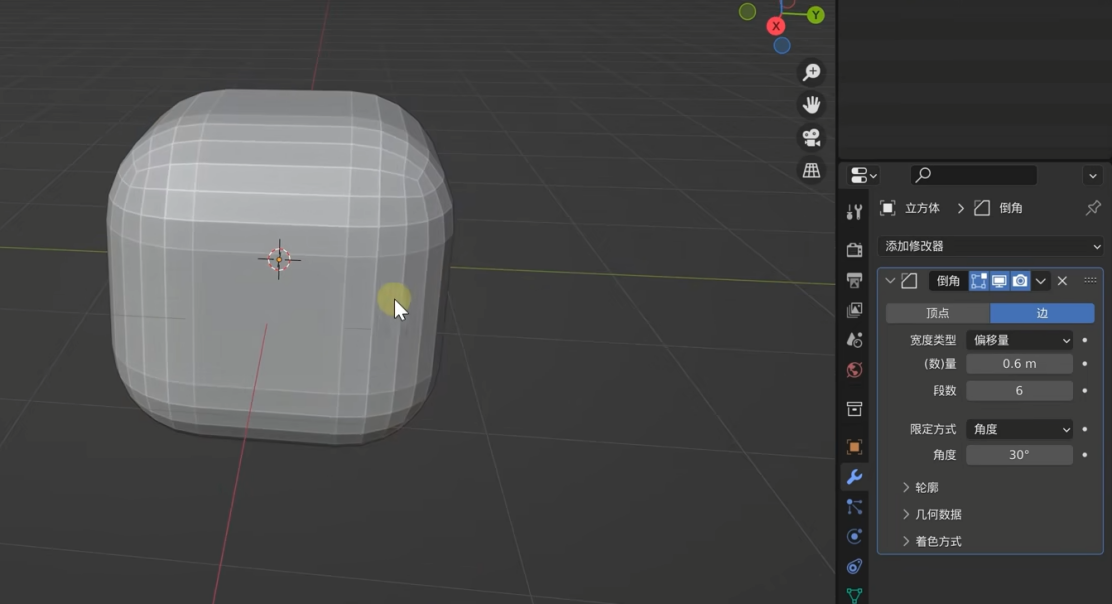
Figure 1. The cube of head (Picture credit: Original)
When manipulating the cube, right-clicking to select subdivision and applying it is necessary. To conveniently edit both sides of the dragon head simultaneously, you can select one half of the dragon head from the middle and delete it. Then, add a mirror modifier in the toolbar, and check the "clipping" option. This step aims to achieve symmetrical editing of the dragon head, ensuring consistency between the left and right sides.
After switching to the right view, start working on the curves of the eyes section, making them concave inward 15 units. Next, adjust the size of the dragon face to 120%,make it looks bigger than the part of eyes。 appropriately and perform a second subdivision. Finally, right-click and select smooth shading to give the entire dragon head a smooth appearance, eliminating unnecessary sharp edges. These steps are dedicated to presenting the three-dimensionality and smooth lines of the dragon head, showcasing its unique and ancient mysterious charm (Figure 2).
.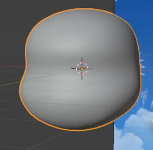
Figure 2. Smooth appearance of head (Picture credit: Original)
2.1.1. Nose The intricate design of the dragon's nose requires meticulous handling of the central part. Firstly, select the middle area of the dragon's head, and use the Ctrl+R shortcut to perform an extrusion operation. Then, stretch the extruded part 10 units, extending it slightly, and then rotate it to give it a slanted effect, showcasing a three-dimensional charm.
Subsequently, while enriching the details, the design of the nose becomes particularly crucial. The middle part appears slightly narrow, while the upper and lower sides are slightly wider, and the middle is somewhat shorter. Then, proceed to create the nasal wing part. This can be achieved by recreating a cuboid and performing vertical loop cuts three times and horizontal loop cuts once, dividing it into 16 small cuboids for area editing. Carefully adjust the shapes of the small cuboids near the edges to give the overall shape an elliptical contour (Figure 3).
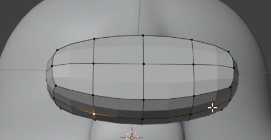
Figure 3. Elliptical contour of Nose (Picture credit: Original)
At the bottom of the ellipse, select two points to form the dragon's nostrils, set 6 chamfers, and extrude upwards to create a depressed area. Following the mirroring method used for other parts of the dragon's head, a mirror modifier should also be added to the nose, with slight adjustments applied. Finally, merge the adjusted nasal wing part with the dragon's head to construct the complete dragon's nose. This process will highlight the meticulous and exquisite design of the dragon's head, showcasing its mystery and dignity. Select the middle part of the dragon's head, use Ctrl+R to extrude, slightly elongate the extruded part, and then rotate 30°it to achieve a tilted effect.
2.1.2. Ear Design In the refined design of the dragon's head, attention to detail is crucial, especially in shaping the ears. The length is approximately 40, which is half the size of the dragon's head.By selecting a specific area in the upper right corner of the dragon's head, skillfully extrude the overall shape of the ears, intricately sculpting graceful ear contours. Utilize the inset faces function (shortcut: I) to precisely adjust the size of the ears and extrude inward to make the ear contours sharply prominent. Further modify the upper part of the ears, elongating and slightly shrinking them to create an artistic form resembling a triangle, presenting an elegant and captivating appearance, thus adding spiritual beauty to the overall design of the dragon's head.
2.1.3. Horn Carving The design of the dragon's horn resembles twisted branches and requires meticulous carving. Firstly, carefully create a cylinder, then connect another slightly thinner and shorter cylinder in the middle of the cylinder, about half the length of the main cylinder. The overall shape is slender and graceful, showcasing dynamic curved lines at a 30° inclined angle. Add another cylinder at the upper quarter position of the main cylinder, similar in scale to the former but slightly shorter. Add delicate chamfers to the upper and lower edges of all cylinders to make the surface smooth and sleek. Duplicate a refined dragon horn and symmetrically attach it to the other side of the dragon's head, creating a dynamic and harmonious overall effect.
2.1.4. Eye Creation Continuing with the detailed eye design, meticulously sculpt the dragon's eyes, which are a crucial part of showcasing the dragon's soul. By creating a sphere, select inset faces, and carefully extrude one side, sculpting deep eye contours to give the dragon vivid vitality and unique charm.
2.2. Body
The sculpting of the dragon's body is one of the essences of the overall design. Starting from a blank canvas, forge a basic cylindrical shape as the prototype of the dragon's body.
Along the side of the cylinder, add another cylinder, finely segmenting and refining it. Select the centroid point and stretch it 30%, This looks appropriately sized., as if interlocking scales overlapping each other, presenting graceful lines. Angle the scales 30° to the right, cleverly integrating them into the main body (Figure 4).
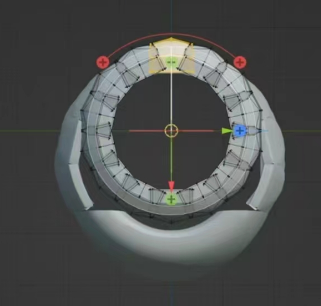
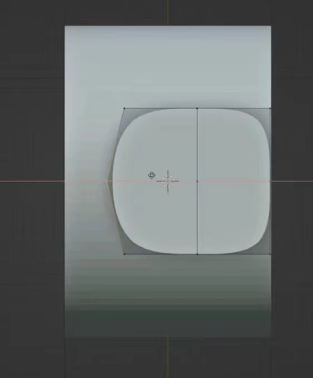
Figure 4. The design of Dragon body (Picture credit: Original)
Switching to the top view of the cylinder, scales are selected, rotated, and duplicated, intricately arranged around the center of the torso, creating a dreamy scale decoration, adding delicate layers to the dragon's appearance.
2.3. Dragon's scales
The scales on the dragon's body present a sense of orderly beauty, with an overall design that avoids stacking like conveyor belts but instead features an interlocking distribution, showcasing a mysterious and lively visual effect (Figure 5). Copy the completed row of scales and slightly rotate it by 10°, cleverly overlapping it onto the previous row of scales, creating the beauty of overlapping intersections.
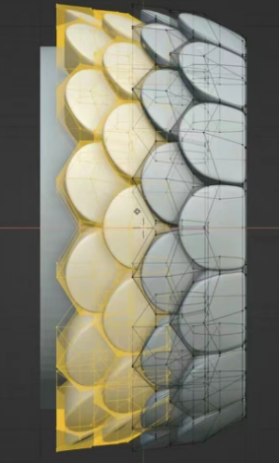
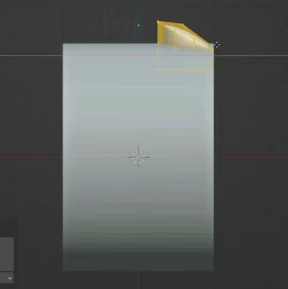
Figure 5. The Dragon's scales (Picture credit: Original)
Repeat this process continuously, skillfully covering the entire dragon's body. Through delicate adjustments to the size of the dragon's body, along with the gradually refined design effect, the elegant charm of the dragon's body is revealed.
The lower part of the torso is covered by several upright large scales, with the bottom scales deleted and replaced by elliptical scales overlapping the torso, creating intricate details (Figure 6). Additionally, scales resembling fish fins stand upright on the dragon's body. Start by sculpting a cube, subdividing and carving it into a triangular shape, then fine-tune the angles to create elegant fin-like scales. By duplicating these scales and evenly distributing them over the dragon's torso, a vibrant and colorful depiction of the dragon is created.
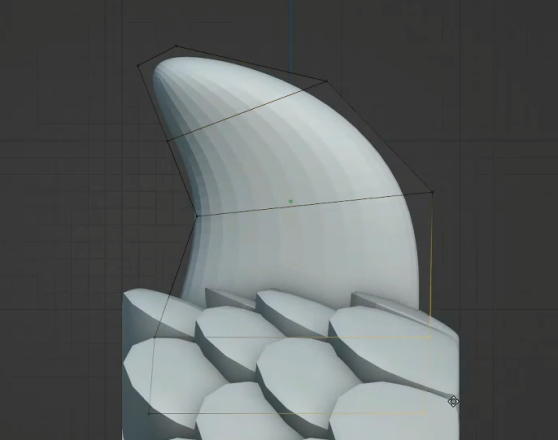
Figure 6. Elliptical scales overlapping the torso (Picture credit: Original)
3. Experiment
After completing the creation of the dragon model in the previous section, this paper presented the entire project to a randomly selected group of 20 individuals and designed a form for them to rate it, aiming to obtain third-party feedback to assist in improving the design (Table 1). Nearly three-fifths of the participants rated the overall effect of the dragon model as "excellent". This can be primarily attributed to numerous minor adjustments made during the assembly phase, such as slightly enlarging the dragon's head, curving its body to create a more harmonious appearance. Additionally, some details on the dragon's body were altered, such as enlarging the scales on the lower half and adding fins to the scales on the upper half. These adjustments made the dragon's skin and scales appear less sharp and more smooth and glossy. All of these changes were aimed at ensuring smoother connections between the dragon's head and body, thus providing viewers with a more comfortable viewing experience.
Table 1. Feedback result
Index | General Effect | Dragon’s Head | Dragon’s Body |
Excellent | 9 | 7 | 11 |
Good | 6 | 8 | 5 |
Medium | 4 | 2 | 4 |
Poor | 1 | 3 | 0 |
Overall, there was a lot of positive feedback received, but there are still some areas that need improvement. The modeling of the dragon's head received some adjustment suggestions, as it was noted that there was relatively less detail showcased in this part.Although the modeling details of the Chinese dragon are relatively sparse, and the production time is shorter, the overall appearance tends to be more cartoonish rather than realistic. There is a lack of application in dragon model usage. However, its unique form and features make the production process quite straightforward and intuitive. The smooth curves and distinctive decorative elements, such as dragon scales and whiskers, provide ample creative space for modelers. Due to the profound cultural significance of the Chinese dragon, cultural background considerations are often necessary during the modeling process to accurately represent its unique image respectfully. Despite the relatively limited model details, through in-depth understanding of Chinese dragon culture and meticulous observation of its characteristics, modelers can create works that are closer to the prototype, resulting in more expressive and culturally significant final products.
In this experiment, 3D modeling allows for high precision and detail, enabling designers to create realistic models that meet real-world requirements. Also, 3D modeling provides excellent visualization, helping users better understand design concepts and aiding in marketing and promotion efforts. Generating realistic visualizations often involves time-consuming tasks such as model refinement, texture mapping, and lighting setup. As a result, the visualization process may extend project timelines.
There also have some disadvantages: Some complex 3D modeling software requires a significant amount of time and effort to learn, which can be challenging for beginners. 3D model files tend to be much larger than 2D files, requiring more storage space and bandwidth to handle and transmit. Handling large or complex 3D models may require powerful computer hardware support, which can increase costs.And Creating high-quality 3D models can be time-consuming
Therefore, we plan to add more production steps and images specifically focusing on the dragon's head. As a result, we aim to further optimize the modeling of the project in the near future.
4. Conclusion
In conclusion, this paper utilized Blender modeling techniques to construct various parts of the Chinese dragon and assembled them into a complete 3D Chinese dragon model. Throughout the construction process, the study encountered challenges in balancing object characteristics and styles. For example Properly unwrapping UVs and efficiently utilizing texture space can be challenging, particularly for intricate models like dragons with irregular shapes and scales. Avoiding texture stretching and distortion while maximizing texture resolution requires both technical proficiency and artistic insight. Optimizing rendering performance involves balancing render settings, texture resolutions, and shader complexity to achieve the desired visual quality within acceptable rendering times. This challenge becomes more pronounced for large scenes or when rendering complex effects like volumetrics or global illumination. Addressing these technical challenges requires a combination of artistic vision, technical expertise, and problem-solving skills, along with a willingness to experiment and iterate until the desired results are achieved.
Through meticulous polishing and adjustments, these challenges were successfully addressed, demonstrating that the Chinese dragon can be constructed in 3D as a cartoon-style model while retaining many of its distinctive features.
Furthermore, the cartoon-style 3D Chinese dragon model created in this paper can provide inspiration for the gaming design field, particularly in areas where such models are lacking. It presents different ideas for other researchers to create 3D dragon models of various types or styles using different construction methods.
References
[1]. Li J, Song J, Wang W. Modeling and simulation of large-scale variable-speed constant-frequency wind turbines. Proceedings of the Chinese Society for Electrical Engineering, 2004, 24(6): 6.
[2]. Jin H. A method for artificial eye production based on 3D computer modeling: CN202111581807.5. CN202111581807.5.
[3]. Zhao K. Research on the reform of the course "Computer-Aided Architectural Modeling" in higher vocational colleges. Shanxi Youth, 2023(5): 112-114.
[4]. Gao G, Duan Y, Dian F. A 3D modeling computer swing frame: CN202022366809.X. CN213930286U
[5]. Xin C, Wang R, Hou Y. Research on the application of modeling tools in virtual scene construction based on VRML. Journal of Nanjing University of Posts and Telecommunications (Natural Science), 2001, 21(002): 90-94.
[6]. Yang L, Li G. Urban simulation modeling tool. Tongji University Press, 2007.
[7]. Yujiang L P C. A graph-based modeling tool. Journal of Beijing Institute of Technology: Natural Science Edition, 1998(6): 723-726.
[8]. Chen Z. Application of Cinema4d modeling tools in character model production. East China Science and Technology, 2022(3): 66-68.
[9]. Liu Y, Gu Q, Sun J. Design and implementation of 3D virtual scene modeling tools. Computer Engineering, 2005, 31(2): 3.
[10]. Feng Y. Research and implementation of virtual 3D landscape planning model and scene. Xi'an University of Science and Technology, 2017.
Cite this article
Wang,Z. (2024). Research and implementation of three-dimensional modeling techniques for Chinese dragon. Applied and Computational Engineering,67,70-77.
Data availability
The datasets used and/or analyzed during the current study will be available from the authors upon reasonable request.
Disclaimer/Publisher's Note
The statements, opinions and data contained in all publications are solely those of the individual author(s) and contributor(s) and not of EWA Publishing and/or the editor(s). EWA Publishing and/or the editor(s) disclaim responsibility for any injury to people or property resulting from any ideas, methods, instructions or products referred to in the content.
About volume
Volume title: Proceedings of the 2nd International Conference on Software Engineering and Machine Learning
© 2024 by the author(s). Licensee EWA Publishing, Oxford, UK. This article is an open access article distributed under the terms and
conditions of the Creative Commons Attribution (CC BY) license. Authors who
publish this series agree to the following terms:
1. Authors retain copyright and grant the series right of first publication with the work simultaneously licensed under a Creative Commons
Attribution License that allows others to share the work with an acknowledgment of the work's authorship and initial publication in this
series.
2. Authors are able to enter into separate, additional contractual arrangements for the non-exclusive distribution of the series's published
version of the work (e.g., post it to an institutional repository or publish it in a book), with an acknowledgment of its initial
publication in this series.
3. Authors are permitted and encouraged to post their work online (e.g., in institutional repositories or on their website) prior to and
during the submission process, as it can lead to productive exchanges, as well as earlier and greater citation of published work (See
Open access policy for details).
References
[1]. Li J, Song J, Wang W. Modeling and simulation of large-scale variable-speed constant-frequency wind turbines. Proceedings of the Chinese Society for Electrical Engineering, 2004, 24(6): 6.
[2]. Jin H. A method for artificial eye production based on 3D computer modeling: CN202111581807.5. CN202111581807.5.
[3]. Zhao K. Research on the reform of the course "Computer-Aided Architectural Modeling" in higher vocational colleges. Shanxi Youth, 2023(5): 112-114.
[4]. Gao G, Duan Y, Dian F. A 3D modeling computer swing frame: CN202022366809.X. CN213930286U
[5]. Xin C, Wang R, Hou Y. Research on the application of modeling tools in virtual scene construction based on VRML. Journal of Nanjing University of Posts and Telecommunications (Natural Science), 2001, 21(002): 90-94.
[6]. Yang L, Li G. Urban simulation modeling tool. Tongji University Press, 2007.
[7]. Yujiang L P C. A graph-based modeling tool. Journal of Beijing Institute of Technology: Natural Science Edition, 1998(6): 723-726.
[8]. Chen Z. Application of Cinema4d modeling tools in character model production. East China Science and Technology, 2022(3): 66-68.
[9]. Liu Y, Gu Q, Sun J. Design and implementation of 3D virtual scene modeling tools. Computer Engineering, 2005, 31(2): 3.
[10]. Feng Y. Research and implementation of virtual 3D landscape planning model and scene. Xi'an University of Science and Technology, 2017.





